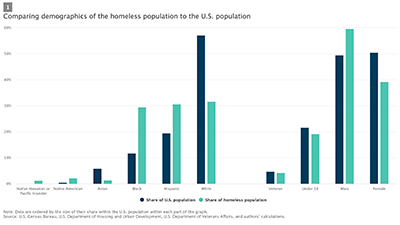Trump Administration tries to tie funding to sanctuary cities executive order

By Charlene Crowell
An effort to limit federal homeless funding to locales embracing Trump Administration policies on sanctuary cities has triggered a lawsuit from homeless advocates.
Although a September 12 court order gave a temporary reprieve to homeless providers seeking to preserve vital services, the approaching end of the current fiscal year, September 30, leaves only a few days to resolve whether $75 million in homeless funding will be shared.
Co-plaintiffs, the National Alliance to End Homelessness, based in Washington, DC and the Women’s Development Corporation in Rhode Island sued HUD, charging that the new criteria would make projects in 36 states, and the District of Columbia ineligible for $75 million for Continuum of Care Build grants.
New funding standards, announced in a September 5 notice, superseded an earlier one issued in May. This change allowed only seven days for applicants to submit revised plans. The May 12 court order now bars HUD from disbursing funds while the case is pending.
The abbreviated time frame was addressed from the bench by District Judge Mary S. McElroy.
“It’s unfortunate that we are here on these things that are done so last minute by these agencies, but here we are,” McElroy told attorneys as reported by a Rhode Island news outlet.
“We welcome the court’s decision to stop a rushed, lawless attempt to make essential funding contingent on a community’s compliance with harmful and unlawful restrictions the Trump-Vance administration is trying to impose,” wrote the plaintiffs and their legal counsel in a joint statement. “This order ensures that service providers can focus on what matters most: providing safe, stable housing and support to people in crisis. We will continue to fight to make sure housing resources remain available to all communities, free from political interference.”
As many workers in the U.S. face challenges to secure and keep affordable housing, homelessness continues to rise.
“Our worsening national affordable housing crisis, rising inflation, stagnating wages among middle- and lower-income households, and the persisting effects of systemic racism have stretched homelessness services systems to their limits,” stated HUD’s Annual Homeless Assessment Report, issued last December.
Citing data from the Census Bureau and Bureau of Labor Standards, the report documents that 2024 recorded the highest ever number of people experiencing homelessness. The annual point-in-time count of America’s homeless found a total of 771,480 people experienced homelessness in an emergency shelter, safe haven, transitional housing program, or in unsheltered locations. More than 99,500 people were counted in unsheltered locations – the highest number recorded since data collection began.
Moreover, Black Americans, who comprise just 12 percent of the total U.S. population, are disproportionately affected by both homelessness (32 percent) and poverty (21 percent).
Between 2023 and 2024, the largest single year increase in homelessness was families with children. Nearly 150,000 children – most under the age of 18 – experienced homelessness on at least one night in 2024, reflecting a 33 percent increase (or 32,618 more children) over 2023.
Conversely, veterans were the only population to report continued declines in homelessness. Between 2023 and 2024, the number of veterans experiencing homelessness declined by eight percent, or 2,692 fewer veterans. The number of veterans experiencing homelessness has declined by 55 percent since data collection about veteran homelessness began in 2009.
“These declines are the result of targeted and sustained funding to reduce veteran homelessness,” states the HUD report.
It will also take the same level and long-term homeless resources to reverse current rising trends for the overall unhoused population.
According to an analysis by the National Alliance to End Homelessness, homeless service providers from California, the state with the largest homeless population and the most Continuum of Care plans, would be ineligible for funding if the revised criteria were to take effect. Potential grantees from other states with serious housing challenges include DC, Florida, Georgia, Illinois, New York, Texas and Washington state.
“The experience of being homeless varies by place, states a recent policy brief from the Minneapolis Federal Reserve Bank. In Los Angeles, most homeless people live outside—a quite different experience than in New York City, where a legal ‘right to shelter’ has almost every homeless person under a roof. The rest of the country is in between.”
“These federal housing funds exist to help people experiencing homelessness — not to punish states, localities, and service providers for meeting people where they are,” said Skye Perryman, President and CEO of Democracy Forward, one of the law firms representing the homeless activists.

